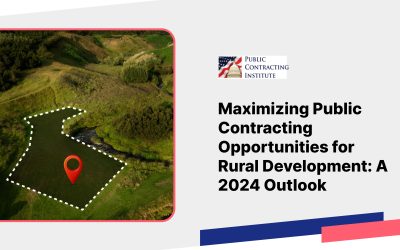The Small Business Administration (“SBA”) adjudicates size protests, typically where one company protests that another company is not small on a procurement that is set-aside for small business only. An important part of the SBA size regulations is the “ostensible subcontractor rule,” which states that:
An ostensible subcontractor is a subcontractor that performs primary and vital requirements of a contract, or of an order under a multiple award schedule contract, or a subcontractor upon which the prime contractor is unusually reliant. All aspects of the relationship between the prime and subcontractor are considered, including, but not limited to, the terms of the proposal (such as contract management, technical responsibilities, and the percentage of subcontracted work), agreements between the prime and subcontractor (such as bonding assistance or the teaming agreement), and whether the subcontractor is the incumbent contractor and is ineligible to submit a proposal because it exceeds the applicable size standard for that solicitation. A contractor and its ostensible subcontractor are treated as joint venturers, and therefore affiliates, for size determination purposes.”
13 C.F.R. § 121.103(h)(4) (sentence order inverted). This rule is designed to prevent “false fronts,” or situation where a large business is a subcontractor to a small business, but in reality, the large business performs the primary and vital parts of the contract. This situation often occurs where the work in one contract performed by a large business is completed and very similar work moves from an unrestricted procurement to a small business set-aside. It is not possible for the incumbent to make an offer on the solicitation, so it will sometimes attempt to form a team with a small business, which will be prime, and itself as a subcontractor. This type of arrangement must be handled carefully, to ensure that the incumbent is not an ostensible subcontractor, which would thereby make it impossible for award to be made to the team. In Size Appeal of Ingenesis, Inc., SBA No. SIZ-5436 (Jan. 28, 2013), the prime contractor took a proper approach, and, on appeal, SBA held there was no ostensible subcontractor.
STG International (“STGi) was a large business supplying medical staffing and support services to the Department of Homeland Security. The contracting officer set aside the next procurement for 8(a) program participants. Ingenisis teamed with STGi as its sole subcontractor. Upon announcement of award to Ingenisis, another offeror protested and alleged that STGi was an ostensible subcontractor. The SBA Area Office found STGi to be an ostensible subcontractor, even though Ingenisis would perform 51% of the work (a majority). However, two of the three key personnel would be STGi employees and the Program Manager would be hired from STGi. Finally, the Area Office stated that “because discrete tasks have not been allocated between the parties, this is clear indication that this is not a true subcontracting relationship.”
SBA’s appellate body, the Office of Hearings and Appeals (“OHA”) saw things differently. Examining all of the relationships, and noting that STGi would perform 51% of the work, OHA held there was no indication that Ingenisis was dependent upon its subcontractor, that Ingenisis was a well-established company with an extensive record performing similar work of comparable magnitude, and there was no evidence that Ingenisis was dependent upon STGi either to win or to perform the contract. There was no “en masse” transfer of employees, and Ingenisis would furnish employees from alternate sources. Finally, with regard to the failure of allocating discrete tasks between Ingenisis and STGi, OHA held that the nature and structure of the contract was a “staffing vehicle” which called for providing personnel at various locations, with requirements that varied over time. Therefore, Ingenisis could not have allocated work, except by location or labor category—and the work was reasonably divided in its proposal.
Finally, the protester asserted that Ingenisis’s proposal made “incessant” references to Ingenisis and STGi as a “team.” OHA concluded that the use of “team” language was not indicative of unusual reliance or that any subcontractor would be performing the primary and vital functions of the contract, citing Size Appeal of Paragon TEC, Inc., SBA No. SIZ-5290 (2011). [Note: although OHA didn’t overrule its prior decisions, it is clear that “persistent identification of the “team” over the “prime contractor” formerly was one factor that could be used to support a finding of undue reliance. See, e.g. Size Appeal of ACCESS Sys., Inc., SBA No. SIZ-4843, at 15 (2007) (“Appellant’s proposal makes no differentiation between itself and [its subcontractor]. Instead, it constantly refers to ‘the [prime contractor-subcontractor] team,’ to ‘we’ to describe effort or plans and to ‘our’ this or that.”) This was deemed sufficient by OHA to show unusual reliance. Size Appeal Of CWU, SBA No. SIZ-5118 (2010)]
The key point to remember is that where a contract is set aside for small business, if you are a small business prime, and you have a significant subcontractor, make sure it is not an ostensible subcontractor. Ensure that your subcontractor does not perform primary and vital requirements of a contract, and the subcontractor is not a company upon which you are unusually reliant. And do not use multiple references to the “team” in your proposal—mention it only once or twice at the outset. In later parts of your proposal, refer to “the Prime,” or “the contractor.” Be careful who you intend to hire away from the former (large business) prime contractor.

